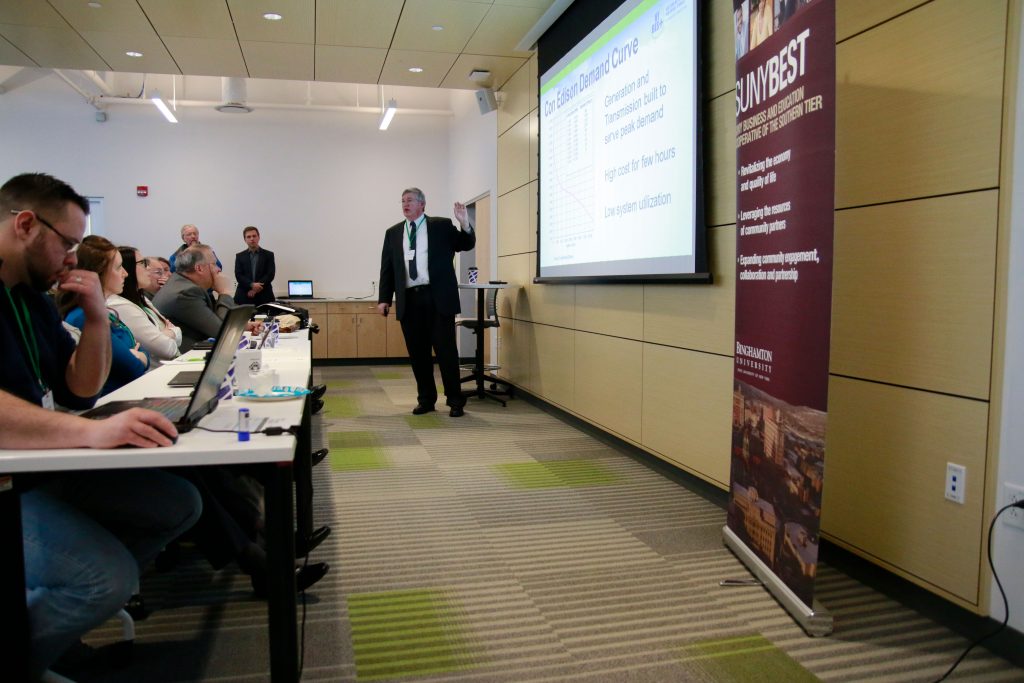
The possibilities of renewable energy and the implications of an aging electrical grid were examined last Thursday at a SUNY Business and Education Cooperative of the Southern Tier (SUNY BEST) conference. Bill Acker, the executive director of New York Battery and Energy Storage Technology Consortium (NY-BEST), spoke about energy storage and the need to update electrical grids across the nation.
Energy storage is a fossil-fuel alternative in which energy absorbs and releases power so it can be either used or saved for a later time. NY-BEST looks to increase the usage of energy storage in New York by working with businesses and organizations throughout the state.
Binghamton area professionals gathered at the Koffman Southern Tier Incubator in Downtown Binghamton to hear Acker discuss the implications of energy storage in New York state. Acker said he predicts energy storage will continue to grow, becoming an essential part of New York’s economy.
“One of the kind of underlying theses of all this is the economic development aspect,” Acker said. “For this group, I think it’s important to understand that energy storage is going to be a really large industry and there are going to be vast economic development opportunities in New York state.”
Acker also mentioned the need to modernize the electricity grid across the United States, as well as the various applications of energy storage. New York is a part of the Eastern Interconnection of the continental U.S. power transmission grid, the electrical grid that has been powering North America since the 1930s.
Acker said there are three important drivers that demonstrate the need for energy storage as a replacement for the current grid.
“The first is improving the efficiency … in that our grid hasn’t been utilized and energy storage can change that,” Acker said. “The second is integrating renewals on the grid. The third is enhancing reliability and resilience. When you have an outage, energy storage can play a mitigating role.”
Evan Bixby, the community solar project manager at Southern Tier Solar Works, said he attended SUNY BEST because his line of work is connected to energy storage and that it’s important to think of alternatives to the current electrical grid.
“We need to make the transition from fossil fuels to renewals,” Bixby said. “There are other reasons such as reliability. [The current electrical grid] is ancient by any technological standards. It needs to be upgraded and modernized.”
Rick Searles, a senior broker at real estate company CBRE, said that he went to learn more about the geographic implications of energy storage and the possible features of these facilities. Searles said that an important reason for utilizing energy storage is not only to decrease the usage of fossil fuels, but also to make up for the limitations brought about by solar power.
“You’ve got to be able to bridge that gap and this [energy storage] is the answer,” Searles said.
Acker noted that there are challenges when it comes to implementing energy storage, particularly because its influence touches so many industries.
“When you think about where energy storage impacts, it’s transforming the transportation industry, the energy industry, the electric grid industry — it’s already transformed electronics,” Acker said. “The challenge with that is that when these things are coming into these industries, a lot of rules have to change ― a lot of things have to change to make it possible.”
Gov. Andrew Cuomo’s current energy storage goals include launching an initiative to deploy 1,500 megawatts of energy storage by 2025, increasing energy storage throughout the state.


